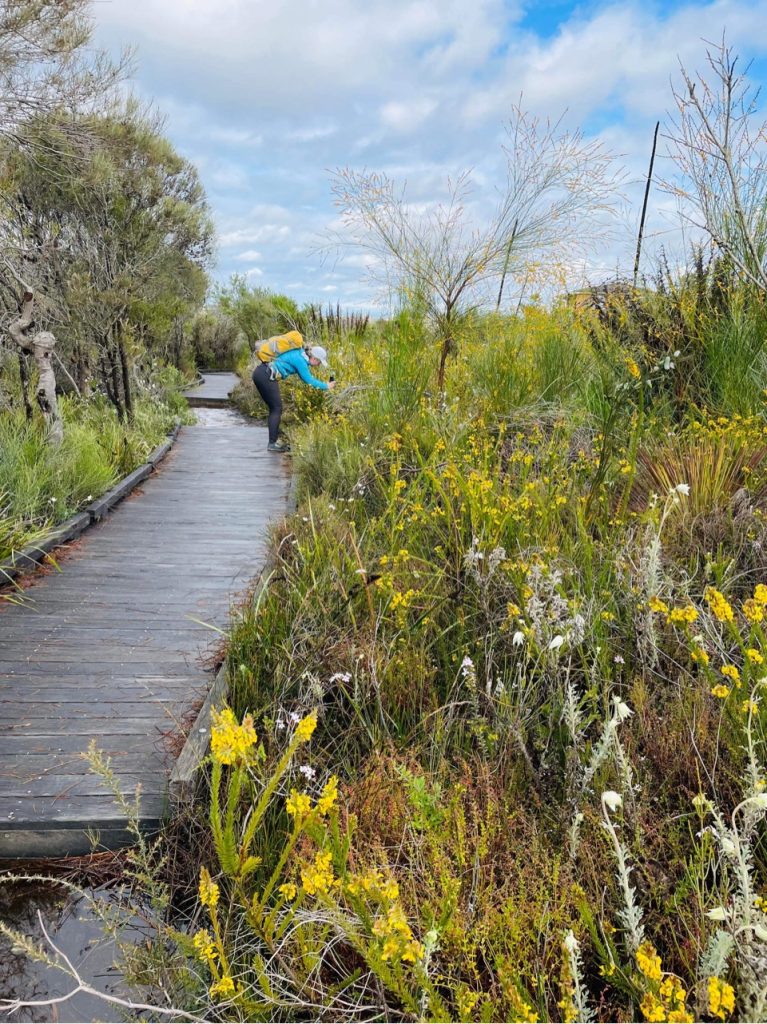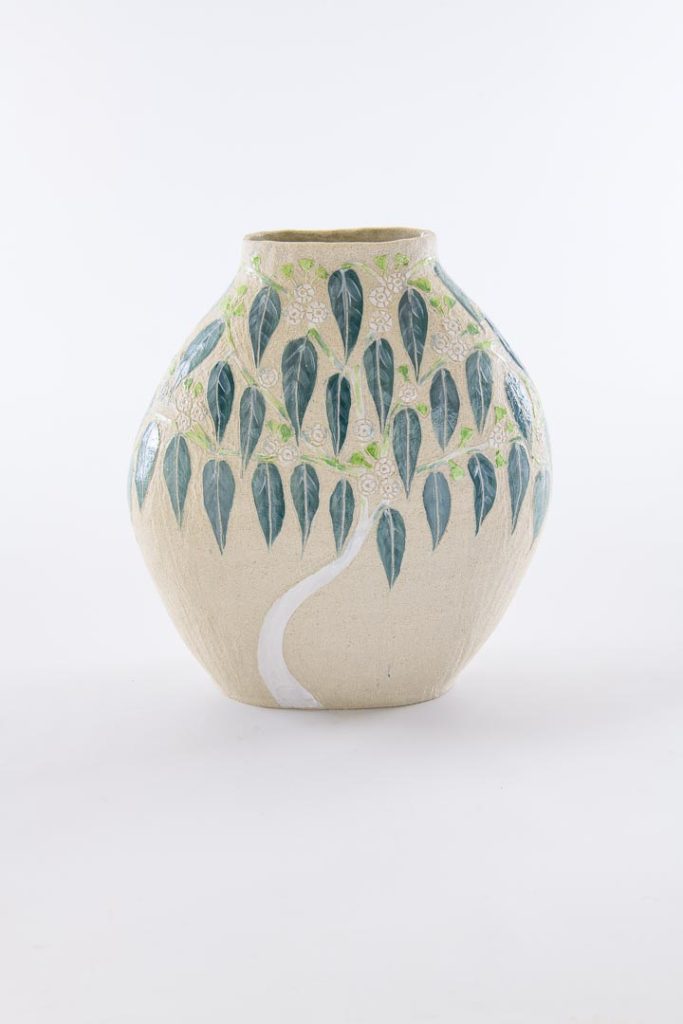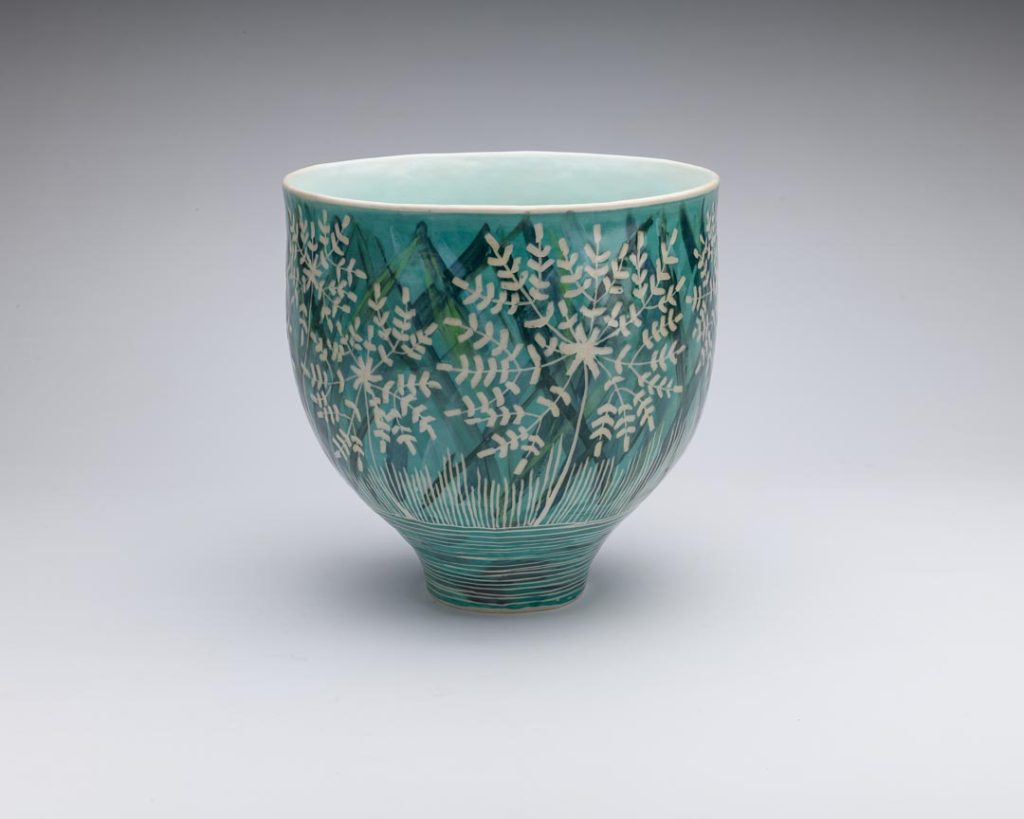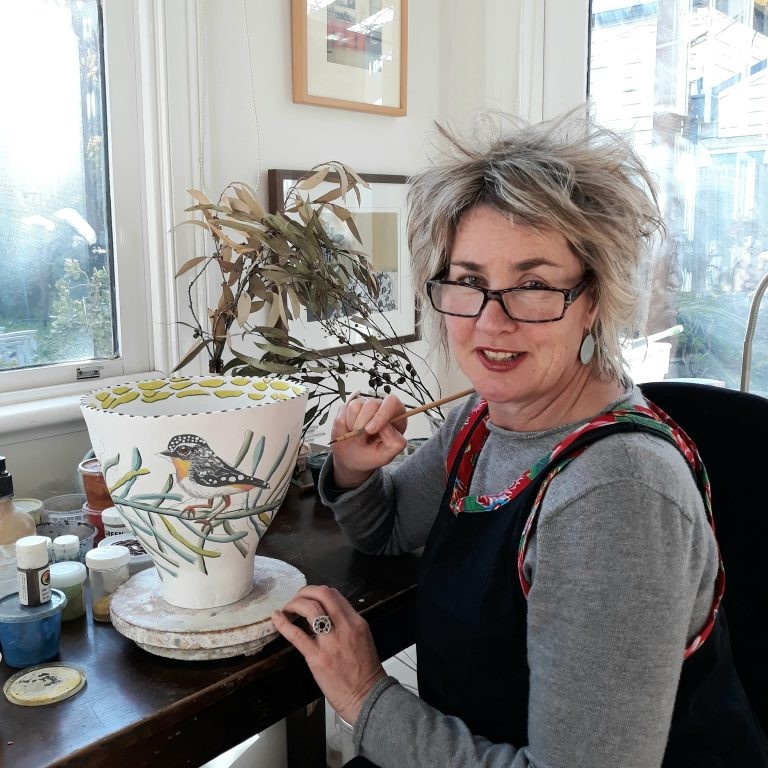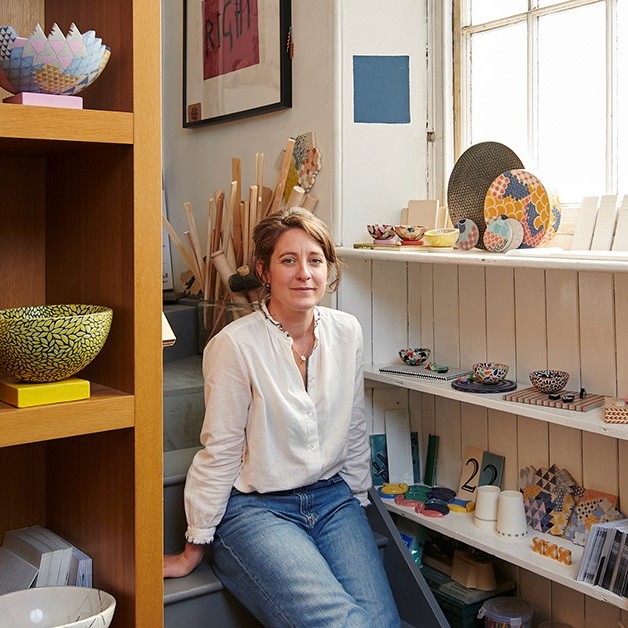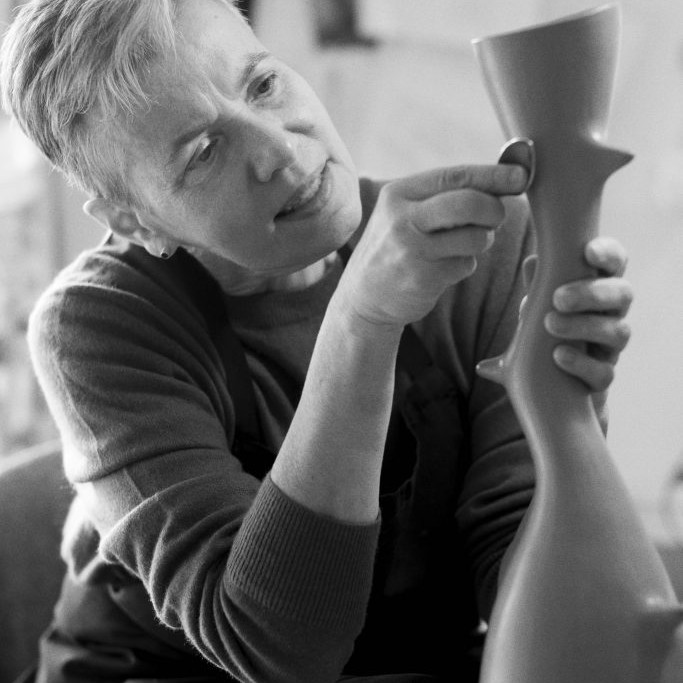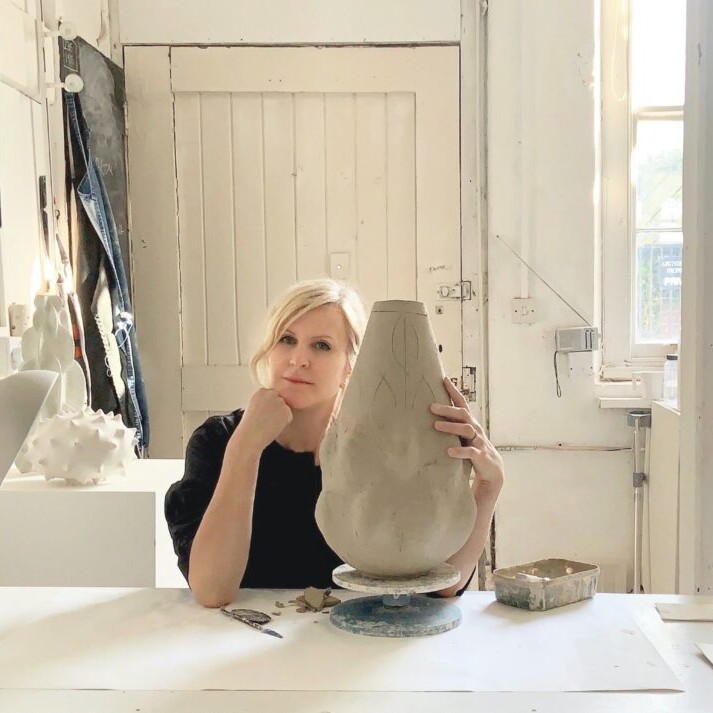Harlinah Teoh Ceramics
What led you to reconnect with ceramics in 2019?
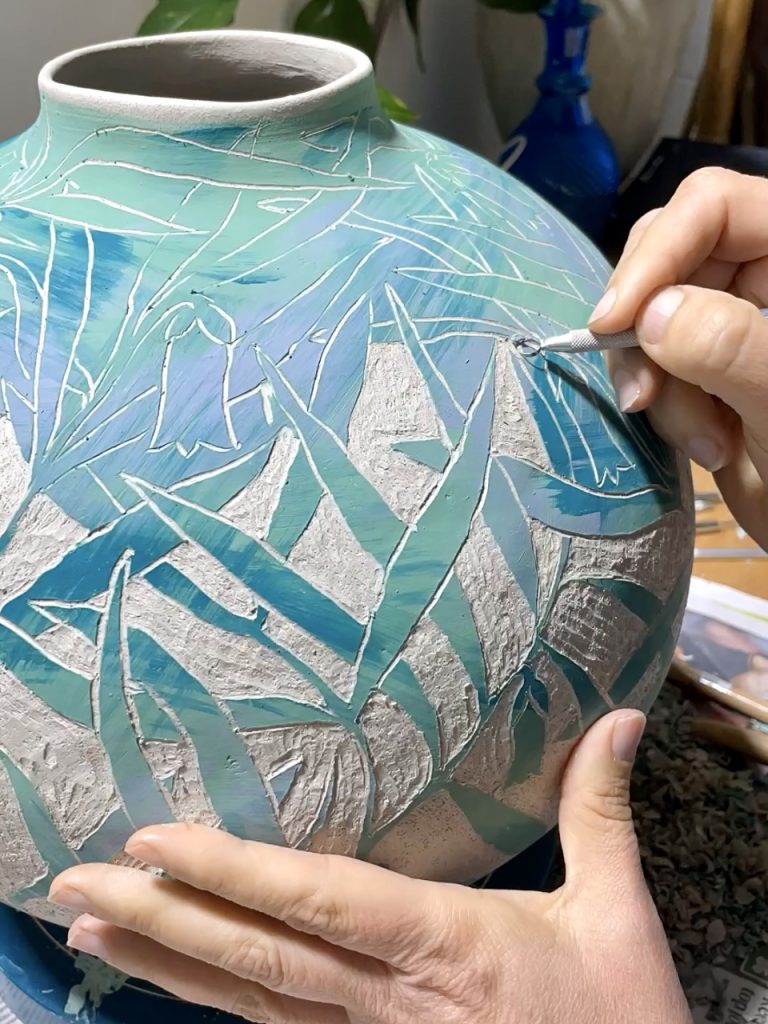
At the end of 2018 I was raising teenagers, working long hours in a demanding job, and studying a postgraduate degree at night. Creativity through art and music had always been important to me, but it had all fallen away as my work became more intense. I was exhausted and felt disconnected from an important part of myself. That year the social club at my work held a Christmas craft market where a colleague was selling her ceramics, and I had a visceral feeling that I needed to make ceramics myself. I’d grown up around potters but had never touched clay as an adult. Over the next month I converted my kids’ backyard cubby house into a tiny studio, borrowed a pile of ceramic books from the local library, bought some clay and basic tools, and signed up for classes. It took another few years of working and a bout of extreme burnout before I realized I needed to shift my priorities and design a life where creativity is central.

Emu Bush (Section 8: One billion years of solitude), H 26 x W 29 x D 29cm, stoneware ceramic.
Did growing up in the bush (country) and rainforest, become the pivotal part in your current ceramics?
Right from the start, I felt the urge to decorate my ceramics with botanical designs. There’s some kind of connection between my creative instincts and my love of plants. For most of my childhood I lived in the bush — dry eucalyptus forest and then subtropical rainforest. I had a lot of freedom to explore, make cubbies in trees and spend days swimming in the creek. I loved reading folktales and mythology, and it all got mixed in together to create a dense, green imaginative world. I didn’t consciously set out to make botanical art, but that’s what emerges when I start making.
Red-Bud Mallee (Section 5: The root of happiness), H 30 x w 24.5 x D 24.5cm, stoneware ceramic.
Tell us about your time in Tokyo and Singapore, how these two places have left their mark on your art?
I was curious about Japan from a young age, inspired by books in our home including a catalogue of ceramics by Shiga Shigeo and a much-loved storybook about two Japanese dolls. After I finished school, I followed my interests and moved to Melbourne to study Japanese at university. I lived in Tokyo for six months when I was 19, and again for a year in my early twenties. These were intense, formative experiences, as things often are at that age. I later met and married my husband, who is Malaysian-Chinese, and we lived in Singapore for 5 years before moving back to Melbourne with our first child. My work doesn’t directly reference Japanese or Chinese art, although exposure and appreciation have no doubt had an influence, as has European folk art. The bigger impact was the experience of living in and adapting to different cultures. My childhood was unconventional, taking me to different communities and schools within Australia. Living in Japan and Singapore marrying and raising children with someone from a different background, doubled down on the need to be adaptable. There’s a lot going on in my work about how organisms (including humans) adapt to their environment, and how meaning changes – native or introduced, precious specimen or weed – depending on context.
Discuss why, your work is hand built rather that from a potter’s wheel?
I started hand-building because I could do it independently at home, in a small space with minimal equipment, which meant I could continue making between my weekly classes. I also realised many of the ceramic works I first admired were by hand-builders, such as Thancoupie, Toshiko Takaezu, Avital Sheffer, Erna Aaltonen and Alev Ebuzziya Siesbye. I enjoy the slow process of coil-building and the energy of hand built forms. After several years of hand-building I took wheel-throwing classes, which developed my understanding of clay and made me a better hand builder. I now use a hybrid technique where I coil-build most forms and use the wheel to refine the shape. I like that I don’t have to trim the pot – the shape I build is the final version, and I can start work on the surface straight away. That said, I’ll probably spend some time developing my throwing skills soon – I think it’s useful to have both skillsets.

Larapinta series – 12 vessels representing the 12 sections of the Larapinta Trail. Various sizes. Various sizes. Stoneware ceramic.
How do you collect or record the plant life you use?
I take photos on my phone while on hiking trips or urban walks. I don’t remove any plant material from the wild – partly due to ‘leave no trace’ hiking principles, but also because I don’t really have the collecting gene! I’m happy to leave things where they are.
Has your time working in the State Library Victoria developed a strong practice of documenting?
What a great question! My mother is an artist and advised me to keep a record of my work from the start. The State Library gave me an extra appreciation for the long lifespan of documentary history and the value that seemingly insignificant documents gain over time. I bumped into former colleagues visiting my first solo exhibition and was surprised and thrilled that they took away a catalogue to create my Australian Art and Artists (AAA) file. It had never occurred to me that I could be part of the AAA collection.

Back, L to R: Pincushion Hakea, Round-Leaf Mallee. Front: Purple Apple-Berry. Various size. Stoneware ceramic.
Your exhibition Larapinta – A Botanical Journey.
How did it arrive at its name?
When restrictions lifted after Melbourne’s COVID lockdown in late 2020, what I wanted more than anything was to get out of my suburban neighbourhood and go for a walk in the bush. My first post-lockdown hike prompted me to join a bushwalking club, which led to me doing longer and more challenging multiday hikes. I discovered I loved walking long distances with my camping gear on my back. The slow pace of walking and the plants I see on the trail have become an essential part of my ceramics practice.
How long was the initial journey and the following journey to the gallery space?

Cassia (Section 1: Simplicity), H 26 x W 25 x D 25 cm. Stoneware ceramic.
In mid-2022 I set out to walk the Larapinta Trail, a 240-km track through the West MacDonnell Ranges in Central Australia. It’s a stunning landscape and a challenging hike through rough, arid terrain. I visited after two years of heavy rain and saw the desert in full bloom. When I returned home, I set myself a goal to create and exhibit a series of 12 ceramic works representing the sections of the trail.
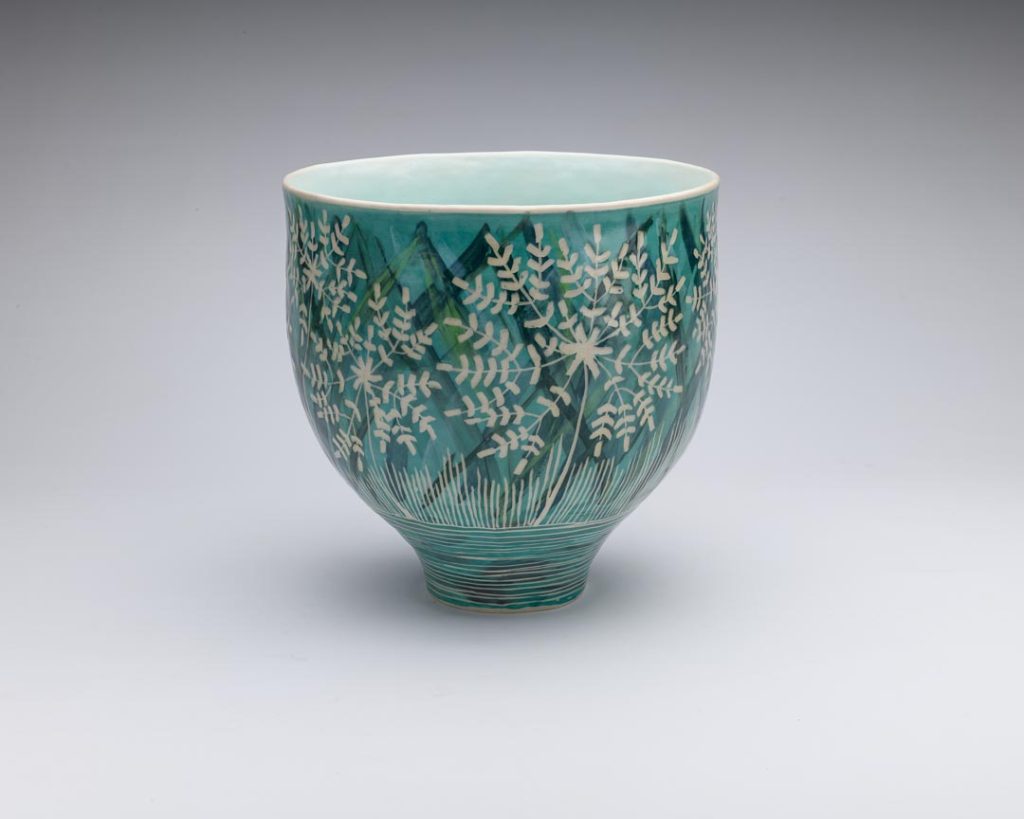
Finke River Reeds (Section 10: The river), H 26 x W 26.5 x D 27 cm. Stoneware ceramic.
‘Larapinta: a botanical journey’ is my first solo exhibition and the outcome of that idea. I started by researching the plants I’d photographed and deciding on the ceramic forms, clay and plants that best represented my experience of each section. My work is named for the plants that inspired them. The Larapinta exhibition series have subtitles that identify the section of trail and give a sense of what I was seeing and experiencing as I walked the trail.
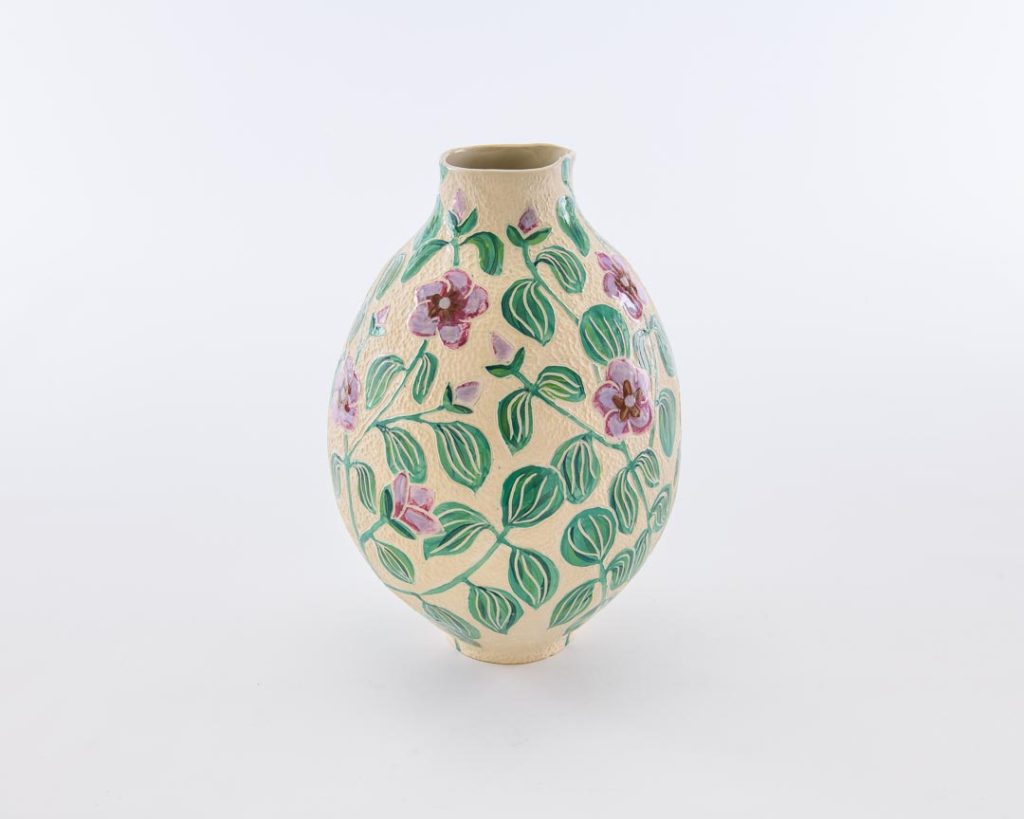
Sturt Desert Rose (Section 7: The serpentine path), H 32 x W 19 x D 19cm. Stoneware ceramic.
These initial ideas evolved as I iterated different versions of the work. In late 2022 an opportunity came up for local artists to apply for gallery space at Glen Eira City Gallery, and I was fortunate to be selected to exhibit in 2023. All up, it took about 9 months to create the final series of 12 vessels.
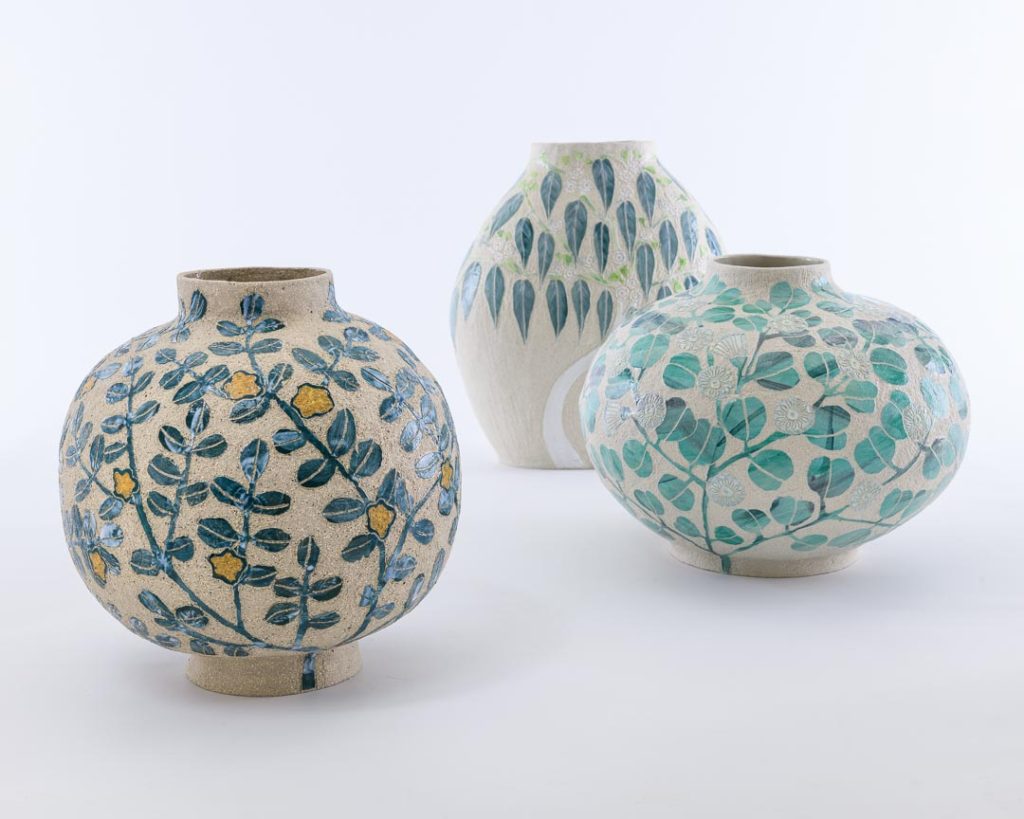
L to R: Cassia, Ghost Gum and Round-Leaf Mallee. Various sizes. Stoneware ceramic.
What was it like to have your first solo exhibition, a sell out?
The response to the exhibition has been extremely positive. It was exciting, and a relief, that all work sold, the majority to international collectors before the exhibition opened and the rest to locals visiting the exhibition. I’ve received wonderful feedback from visitors. The experience working with the curator, Diane Soumilas, and gallery team has been fantastic and I’m very grateful for the opportunity to show my work in a public forum.
Ghost Gum (Section 9: This too shall pass), H 32.5 x W 30 x D 16 cm. Stoneware ceramic.
Do you see most of your pieces as solo, do you sell pieces in groupings.?
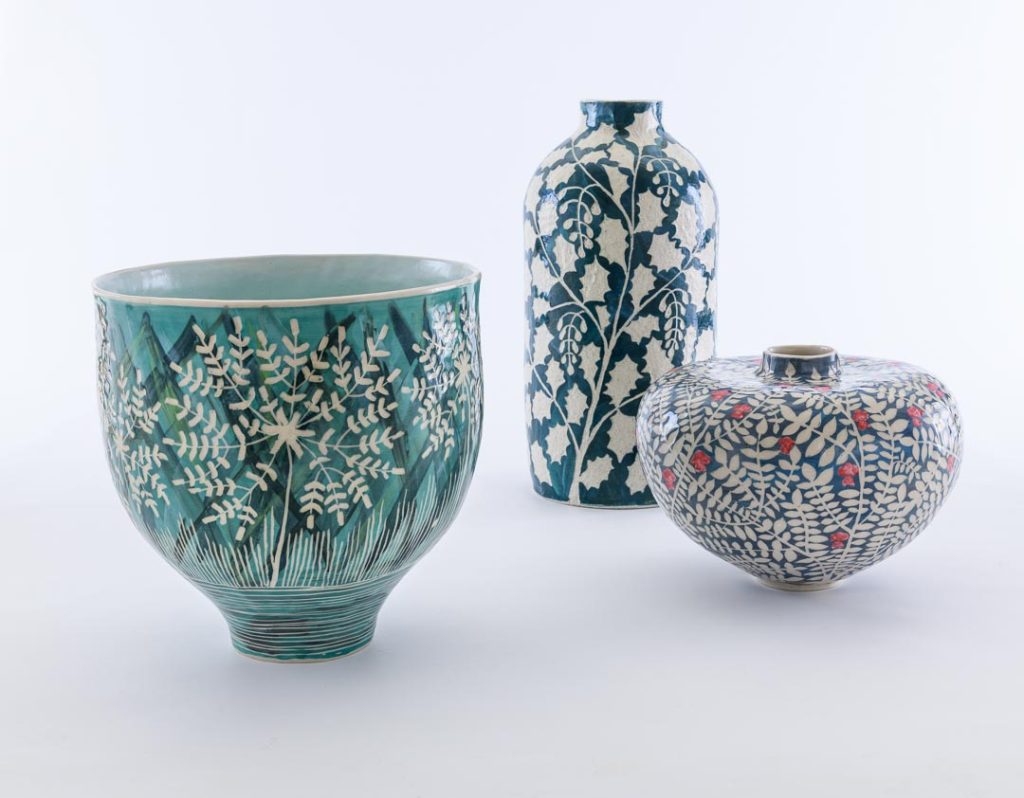
L to R: Finke River Reeds, Holly Grevillea and Silver Indigo.
I make stand-alone works, although some, like the Larapinta vessels, are part of thematically linked series. They do look good grouped together, and quite a few collectors have bought multiple pieces together. I currently sell work individually to give people the option of buying one or choosing their favourites to combine. Maybe in future I’ll exhibit and sell work in groupings.
Can you show us your makers mark on the base of your work, what does include?
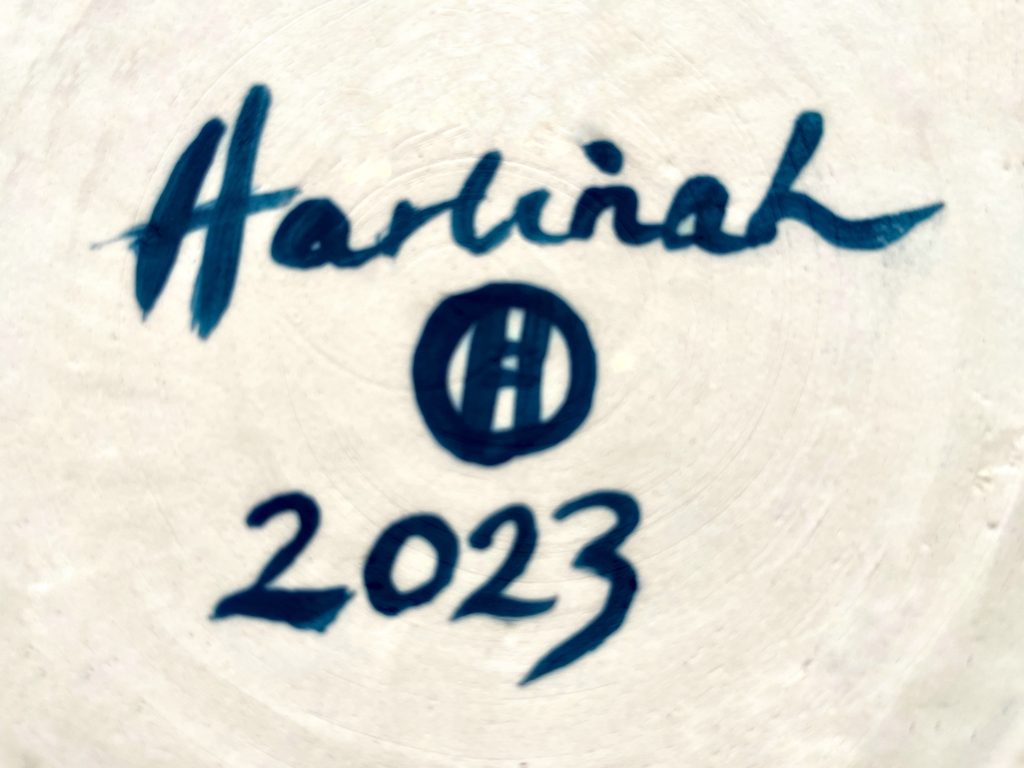
My maker’s mark is my first name, a stylised symbol combining my initials (which I sometimes use alone if space is limited), and the year of making, signed in underglaze.
Tell us about your cups.
Variety of cups including Cassia, Round-Leaf Mallee, Pincushion Hakea, Mulla-Mulla, Silver Indigo, Finke River Reeds, and Silver Banksia.
H 6.5-11 cm, diameter 8-10cm. Stoneware ceramic.
My cups are like miniature samplers exploring the plants featured on my bigger pots. They use the same techniques as large work, with layered painting, sgraffito and glazing, so they’re little artworks in their own right. They’re time-consuming to make and I don’t produce many, but I like that they make buying a one-off ceramic artwork more affordable. Also, I do love it when people let me know how they enjoy using my cups. The cups vary in size and construction technique. Generally they’re about 8-11cm tall, and they may be wheel-thrown, coil-built or pinched – I’m still experimenting and haven’t landed on a preferred construction.
What does it feel like when viewers can recognize and name the plants on your pots?
When people take the time to tell me they recognise a particular plant, it’s usually because they have their own emotional connection with that plant. Perhaps they have walked the same trail, or remember it from their childhood, or grow it in their own garden. These people are kindred spirits who form memories associating plants, people and places. It’s great to know that my work has prompted them to remember and relive that connection.
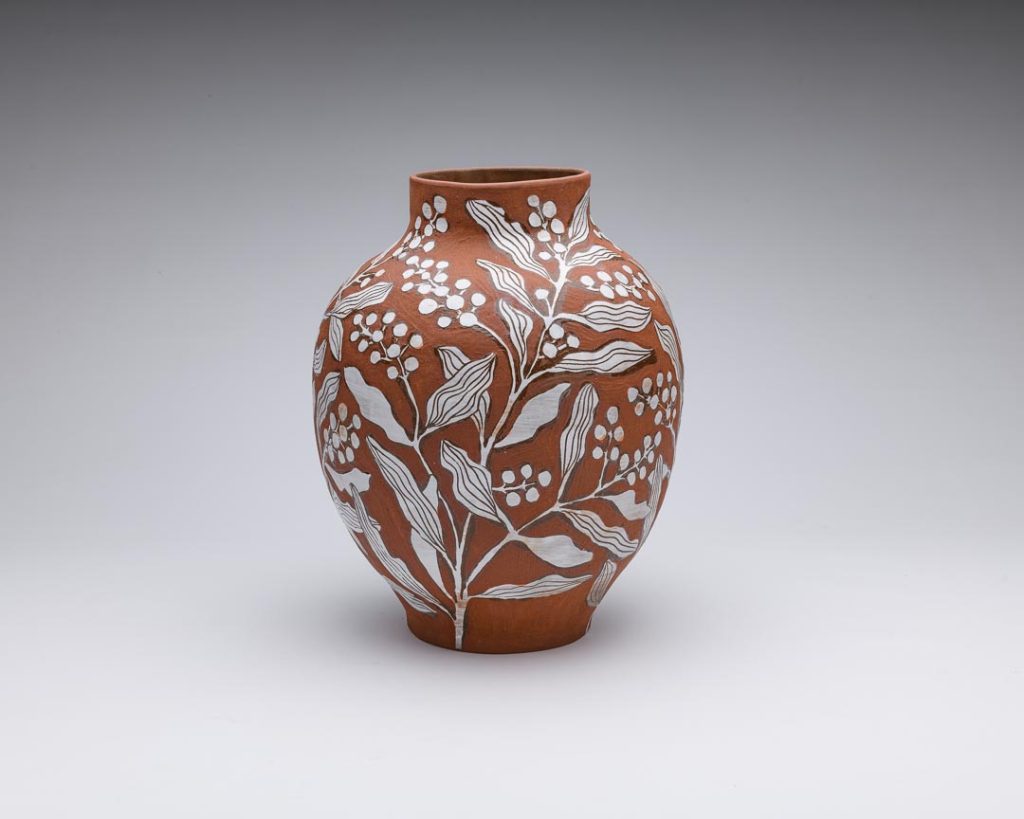
Acacia (Section 12: The mother), H 31 x W 23 x D 23 cm, stoneware ceramic.
Do you give an extra botanical information with the piece as it is sold?
I include the plant details, where I saw it and a photo from the trail on the website listing.
Discuss, Silver Indigo.
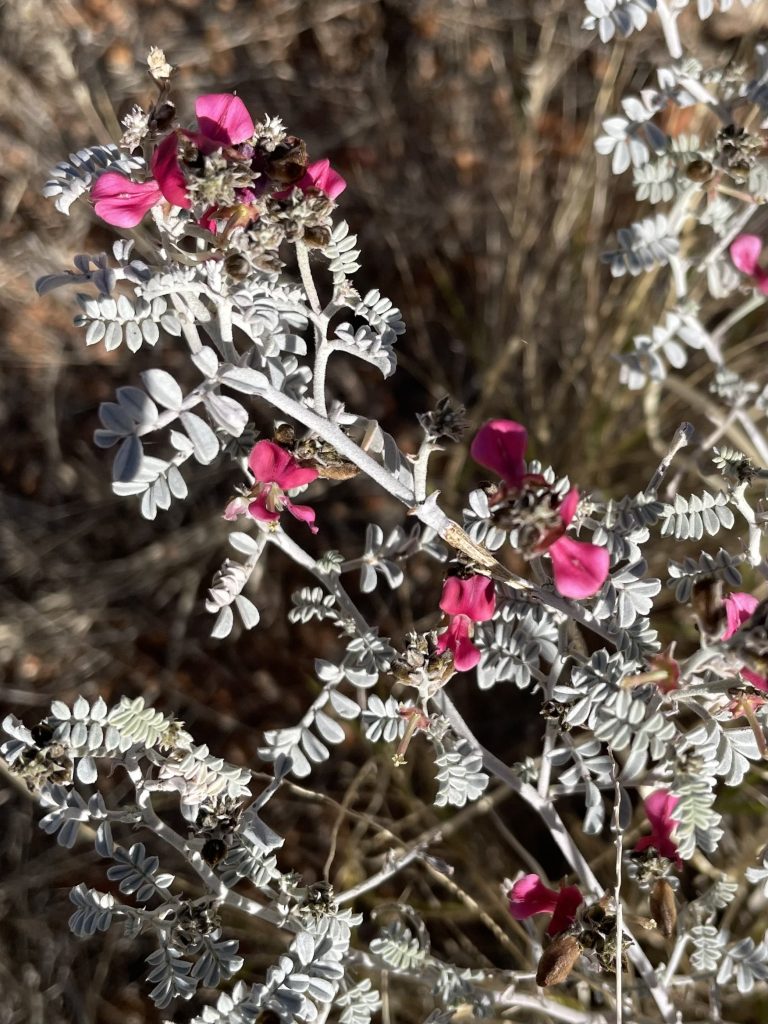
Silver Indigo represents Section 2 of the Larapinta Trail. The plant, Indigofera leucotricha, is a desert shrub with tiny silvery-white leaves and deep pink flowers.
For the vessel representing this plant, I wanted to reference the rounded form of the plant, the colour and delicacy of the leaves, and the blue sky of this open section of the trail. The pot is built from smooth white clay, coiled up from a narrow base into a wide form at the top. This was a risky form as there was a chance the thin walls might slump when the clay became molten at high temperature. The surface was painted with multiple shades of blue and grey glaze, then the leaves and flowers were carved through the underglaze, exposing the white clay underneath. Finally, after testing different versions of the flower on test tiles, the flowers were painted in.
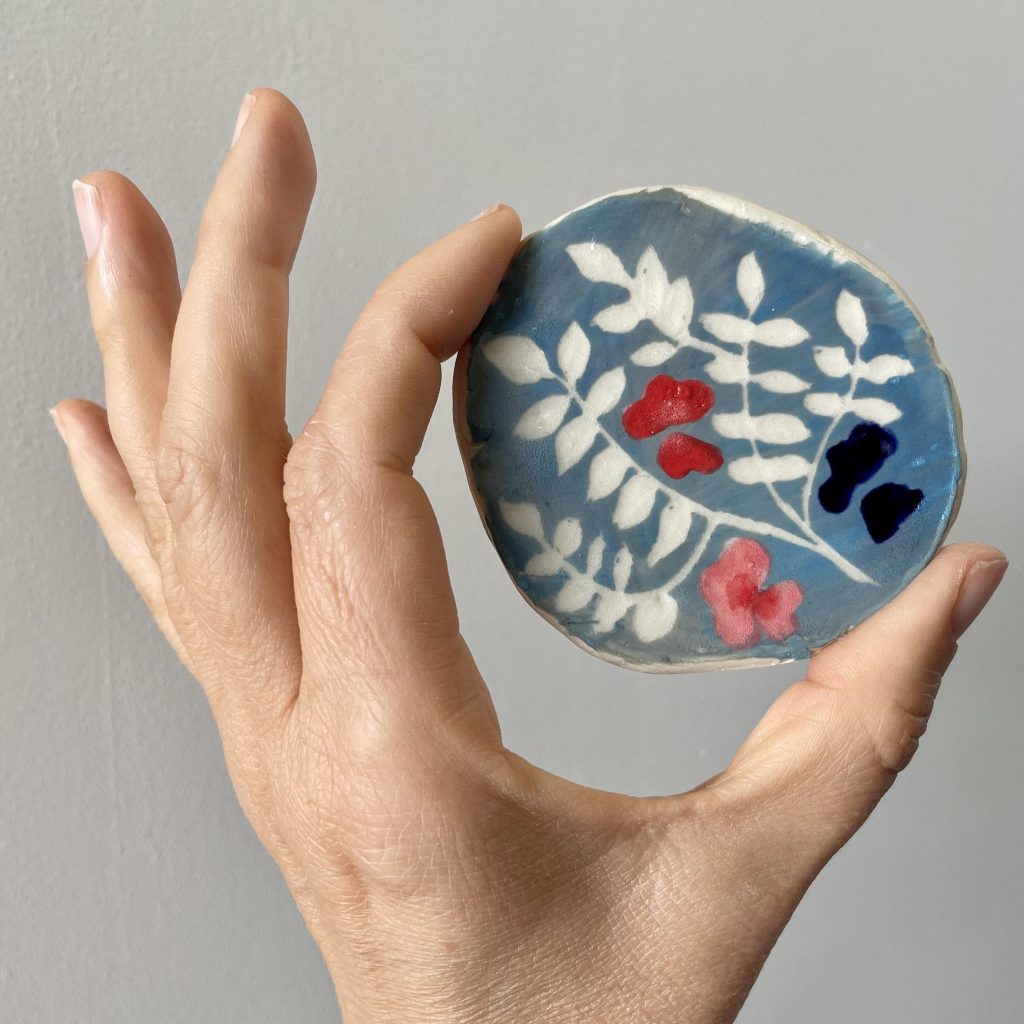
The pot was fired, glazed, and then fired again. Fortunately, the form held during the final firing and the result seems to float on its narrow base.

Silver Indigo (Section 2: Starfall), H 18 x W 25 x D 25 cm. Stoneware ceramic.
Comment on two glazes and how they have affected the pieces?
Most of my work uses underglaze and slips, with clear glaze on top. Very occasionally I use a coloured commercial glaze, as I did for the Finke River Reeds bowl which has a pale blue interior. I’ve recently been studying glaze formulation and am just starting to experiment with my own glazes. All the work shown is made from stoneware clay with different characteristics –smooth and gritty, in shades of white, sand and red which relate to the Larapinta landscape of quartz and red earth. The surface designs use underglaze, clear glaze, occasionally porcelain slip, and occasionally a coloured glaze on the inside of a cup or bowl. The work is fired at Cone 10 (approx. 1280°C) or Cone 6 (approx. 1220°C), depending on the effect I’m looking for in the clay and underglaze. I use different clays and glazes appropriate to the firing temperature. I choose materials based on the feeling and colours of the land I walk in. For example, the red clay was important for Central Australia, while for the Overland Track in Tasmania I’m bringing in dark clay, indigo underglaze, natural oxide stains and slips, and matte bronzy-green glaze. For the Jatbula Trail in the tropical Top End of the Northern Territory, I’m starting to explore glazes that run and move, referencing the importance of water to my experience of that trail.
Finke River Reeds (Section 10: The river), H 26 x W 26.5 x D 27 cm. Stoneware ceramic.
Where is your kiln?
In mid-2022 I completed an internship with Pie Bolton at The Kiln Room, and soon after began renting studio space there alongside several other ceramic artists. While there are plans afoot for us to be able to fire our own work, for now Pie does the firing. Eventually I’d like to build a home studio with my own kiln. In the meantime, I’m enjoying the learning opportunities and community of working in a shared studio.
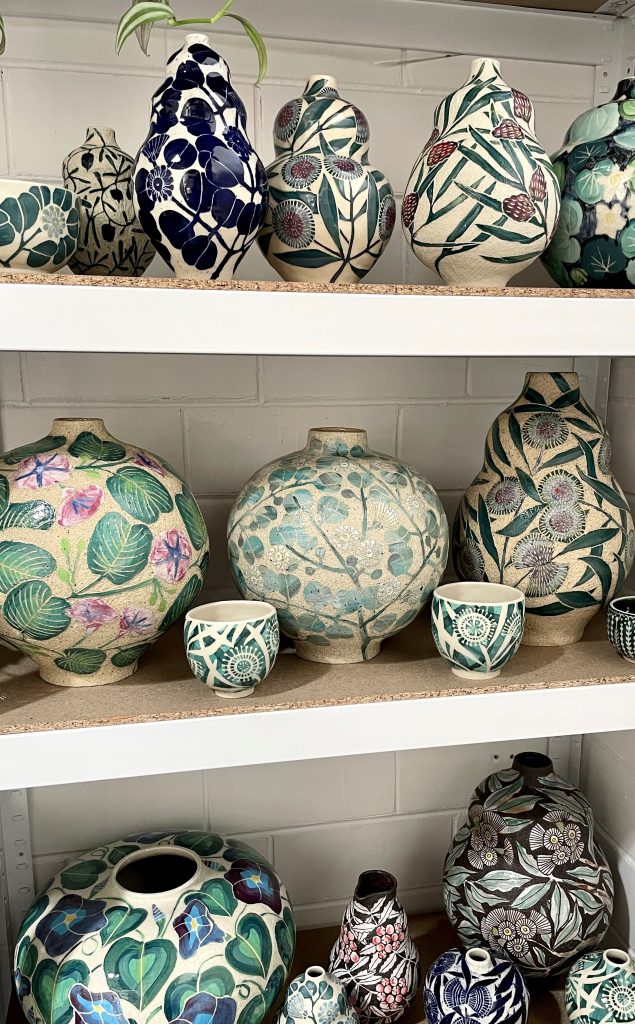
Where have some of your ceramics gone?
My work is held in private collections across Australia and in New Zealand, the United States, UK, the Netherlands, Germany, Singapore and Hong Kong.

Holly Grevillea (Section 11: Through walking it is solved), H 37 x W 18 x D 18. Stoneware ceramic.
Where to next for you and your work?
My main goal is to keep developing my work in ways that excite me. I’m currently learning about glaze chemistry so I can produce custom glazes that bring different qualities to surfaces. I’m also on a steep learning curve about the business of ceramics, aiming to establish a sustainable rhythm of making and selling across the year. I’ll stay open to other opportunities to share my work through exhibitions. And I’ll keep hiking for inspiration – although right now, I have plenty to work on after recent hikes in Tasmania, the Northern Territory, and the south coast of New South Wales.
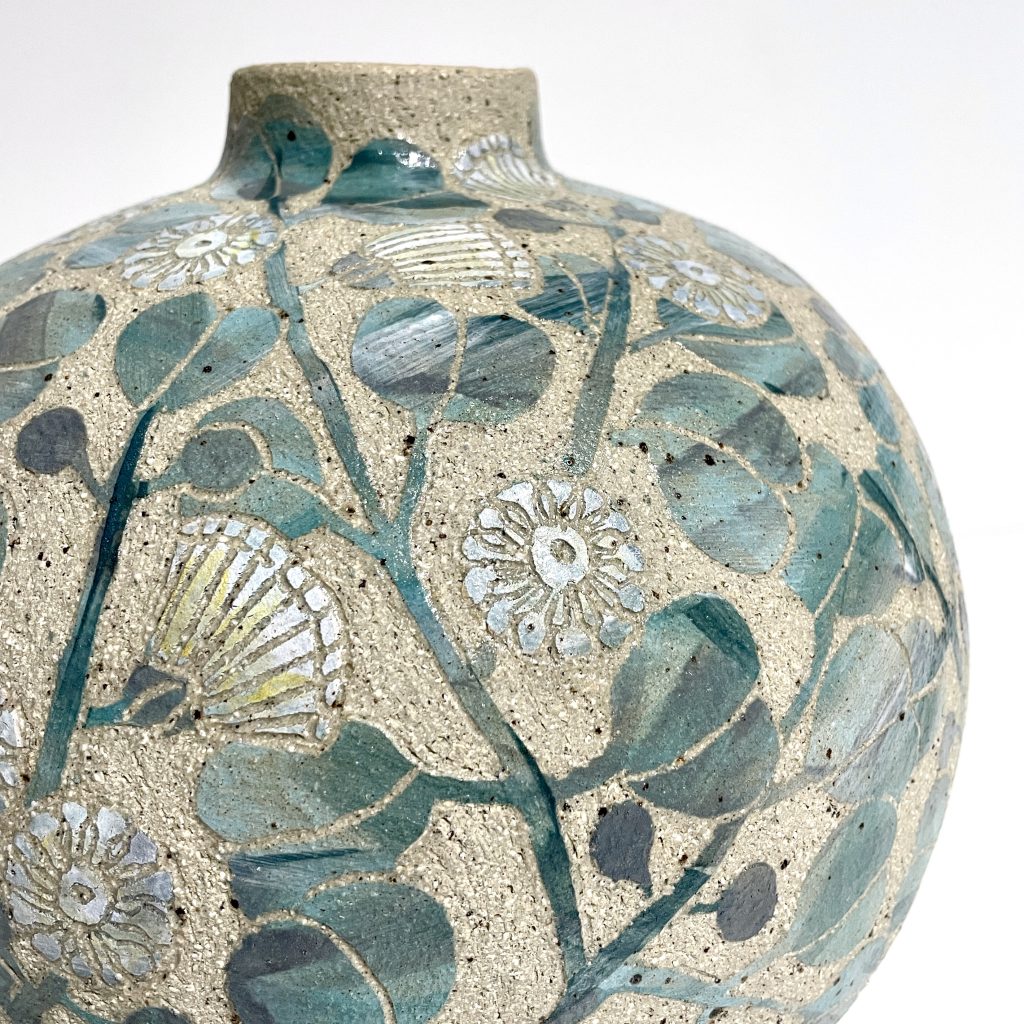
Round-Leaf Mallee (detail). Stoneware ceramic.
Contact:
Harlinah Teoh
harlinahteoh.com
harlinahteoh@gmail.com
Deborah Blakeley, Melbourne, Australia
Interview by Deborah Blakeley, September 2023
Think a colleague or friend could benefit from this interview?
Knowledge is one of the biggest assets in any business. So why not forward this on to your friends and colleagues so they too can start taking advantage of the insightful information the artist has given?
Other artists you may be interested in:




